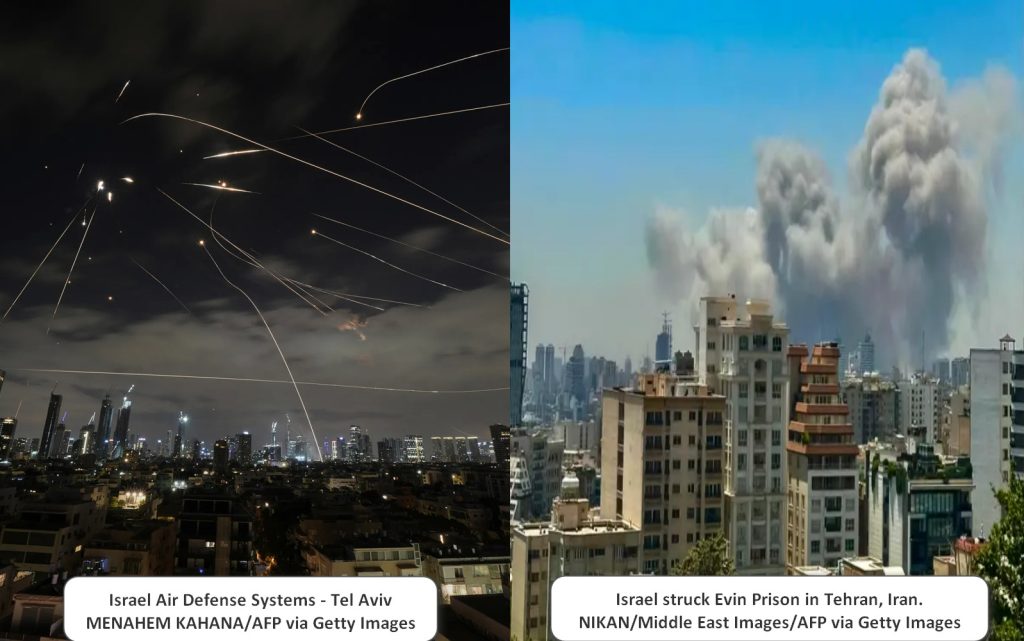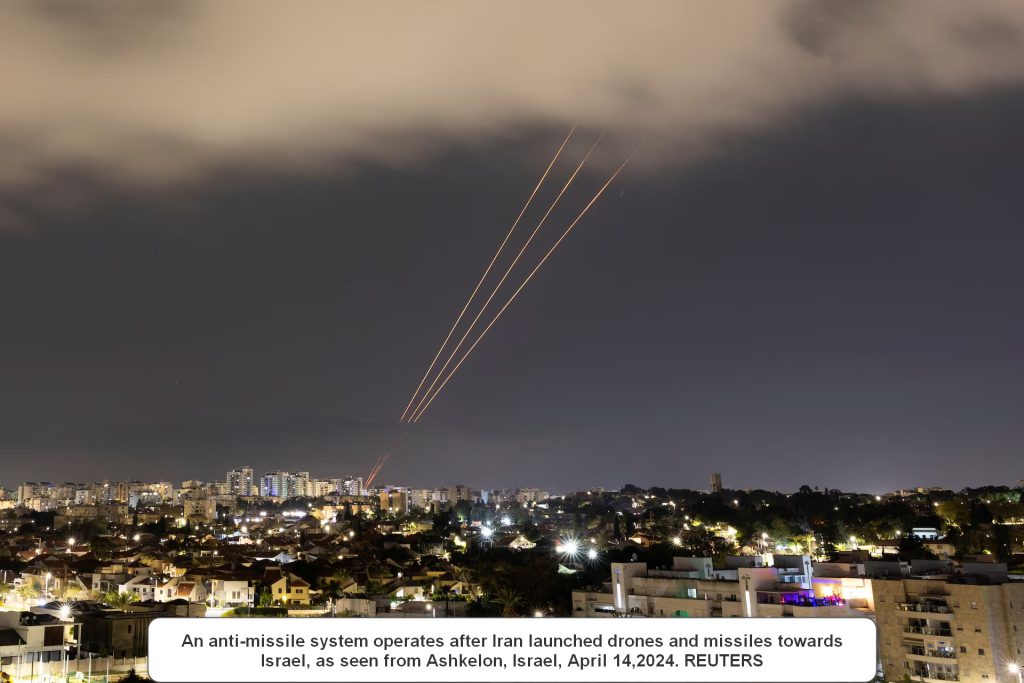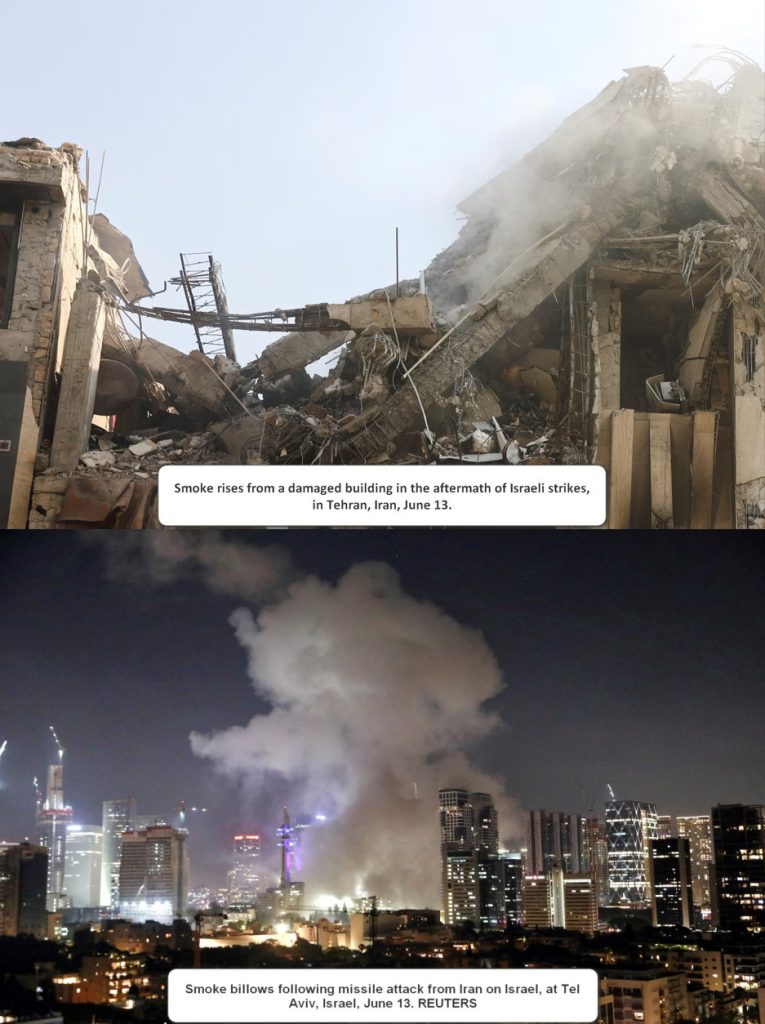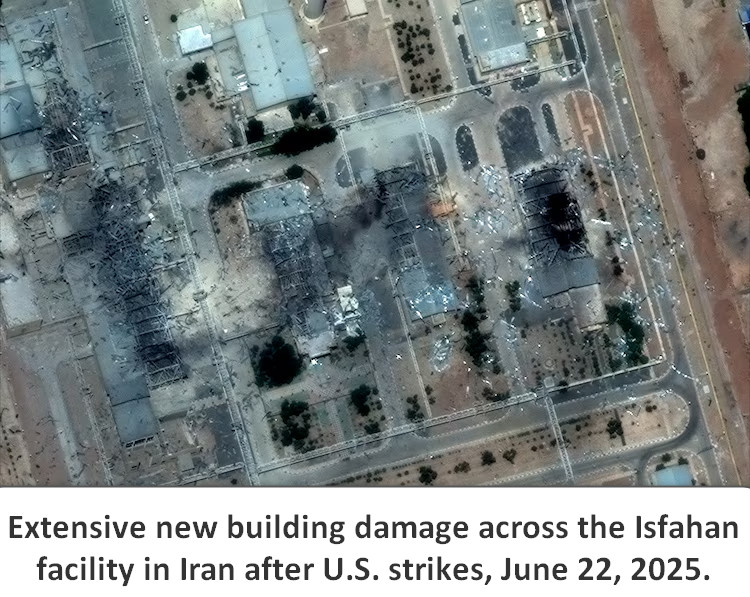Introduction
The long-standing tensions between Israel and Iran unexpectedly escalated into an open military conflict on June 13-24, 2025. On the morning of June 13, Israel launched large-scale airstrikes against Iran’s nuclear and military infrastructure, sparking a bloody war between the two countries. Israel struck Iran’s nuclear program and critical military targets in a succession of explosions in Tehran. Iran quickly retaliated, targeting Israel with ballistic missiles and drones. The conflict escalated tensions in the region to the highest level, with intense bombardments on both sides. The international community watched the developments with great concern, while countries in the region reacted to this dangerous escalation. On June 24, a fragile US-brokered ceasefire ended two weeks of violent fighting.
Source: Business insider
In this report, we will discuss the history of the Israel – Iran Tension, the developments during June 13-24, 2025, how the events began and ended, their regional and global consequences, and their impact on cryptocurrency markets.
History of the Tension between Israel and Iran (Israel – Iran Tension History)
Tensions between Israel and Iran go back decades. After the 1979 Iranian Revolution, Iran’s refusal to recognize Israel and its hard-line stance against the regional regime brought relations to the level of hostility. As Iran’s nuclear program gained momentum in the 2000s, Israel began to view it as an existential threat. Although the two countries did not go to war directly, they engaged in what could be characterized as a shadow war for many years. After the 2015 international nuclear deal (JCPOA), tensions eased for a while, but sabotage and attacks against Iran’s nuclear program accelerated again after the US withdrew from the deal in 2018.
In October 2023, a Hamas attack on Israel from Gaza escalated tensions in the region. Following this attack, Israel-Iran relations escalated and Israel launched harsh rhetoric and indirect counterattacks against Iran, which it accused of supporting Hamas. In the first months of 2024, Middle East geopolitical tensions continued as a result of the escalation of Israel-Iran relations through third countries such as Syria and Iraq, including the shooting down of an Iranian facility in Damascus and the Iranian missile launches from Syria into Israel.
Source: REUTERS
In October 2024, for the first time, Israeli warplanes carried out direct strikes on Iranian territory. This development was interpreted by many observers in the region as a harbinger of open war between the two countries. By June 2025, tensions had reached a point where they were ready to explode. Harsh statements, military preparations and mutual threats by both sides set the stage for a direct confrontation.
| Year | Event |
|---|---|
| 1979 | Iranian Revolution: Iran refuses to recognize Israel. |
| 1980s | Iran’s nuclear program accelerates, seen as an existential threat by Israel. |
| 2000s | Israel and Iran engage in covert operations; cyberattacks and assassinations increase. |
| 2015 | JCPOA (Joint Comprehensive Plan of Action) is signed, temporarily reducing tensions. |
| 2018 | The US withdraws from the JCPOA; sanctions return, and tensions over Iran’s nuclear program rise. |
| 2023 | Hamas launches a major attack on Israel from Gaza, accused of supporting Iran. |
| 2024 | Israel conducts direct airstrikes on Iranian soil, signaling a path towards open conflict. |
| 2025 | Full-scale military escalation occurs, followed by a ceasefire, ending the conflict. |
Recent Tensions between Israel and Iran (June 13-24, 2025)
On June 13, Israel launched a large-scale airstrike targeting Iran’s nuclear facilities and ballistic missile bases. Israel dubbed this operation “Operation Rising Lion”. Simultaneously, hundreds of Israeli warplanes attacked critical military installations in different Iranian cities. Violent explosions erupted in several major cities, including Tehran, Tabriz, Isfahan, Qom and Kermanshah.
Source: REUTERS
Iran reacted swiftly to this Israeli attack. Starting in the evening of the same day, Iran launched intense missile and drone strikes against Israel. Under the name of “Operation Inevitable Promise”, Iran launched hundreds of ballistic missiles and armed drones at Israeli cities. Tel Aviv and its surroundings were particularly targeted. Israel’s air defense systems such as Iron Dome and Arrow destroyed most of the Iranian missiles in the air. However, despite these systems, some of the missiles hit residential areas and caused major damage.
By June 19, a week into the war, the picture was grim for both countries. Iran’s critical infrastructure – military installations, radar bases, power plants – had been hit one after the other, the capital Tehran had experienced internet blackouts and daily life had ground to a halt. In Israel, Iranian missiles turned some neighborhoods in Tel Aviv into ghost towns. The international community intensified its diplomatic efforts to stop the conflict. The United Nations and the European Union called for a ceasefire, while regional countries such as Turkey offered to mediate to ease tensions. On June 19, US President Donald Trump said in a statement that he had not yet made a decision, saying, “It will be clear in two weeks, maybe we will participate, maybe we won’t.”
The conflict reached its critical threshold on June 22, 2025. On June 22, the United States decided to intervene directly in the conflict due to growing regional threats and the danger posed by Iranian missile attacks in the region. B-2 bombers and F-15 squadrons carried out pinpoint strikes against Iranian nuclear facilities. Iran called the attack a “dangerous escalation” and tried to respond swiftly. On June 22-23, Iran launched missile strikes against American targets in the Gulf. These attacks have increased the risk of escalation into a regional conflict.
Source: ABCNEWS
The US intervention has also increased the pressure for mediation. US President Donald Trump conducted intensive diplomacy with both Israel and Iran in an effort to end the conflict before it escalated further. And on June 24, 2025, the parties agreed to a ceasefire. As a result of the negotiations conducted by the US with the support of actors such as Qatar and Oman, a cessation of mutual attacks was announced at noon on June 24. With the announcement of the ceasefire, both the Israeli and Iranian people breathed a deep sigh of relief. This 12-day period of conflict has been recorded as an unprecedented page in the history of both Iran and Israel. After years of covert warfare, the two countries have entered into such a direct and intense conflict for the first time.
The Impact and Consequences of the Tension on the Cryptocurrency Market
Middle East geopolitical tensions and the Israel-Iran relations escalation, coupled with the June 2025 conflict, led to significant volatility in the cryptocurrency market. On June 13, the price of Bitcoin fell 3-4% from $106,000 to $102,600 as Israel launched airstrikes against Iran. The spike in geopolitical risks also led to a sell-off in altcoins. Some altcoins lost more than 10% of their value.
While the attacks continued between June 14-21, attempts to recover in the crypto market were not enough. Although the Bitcoin price rose above the $108,000 level again with the purchases on June 15-16, it fell to $100,700 on June 21 due to the selling pressure on the markets caused by the ongoing conflicts in the region. On June 22, the US entered the conflict and carried out operations against Iran’s nuclear facilities, causing a major shock to the market. The price of Bitcoin fell below the $100,000 level, while altcoins plummeted by 20-30%.
On June 24, after the ceasefire was announced, the markets saw a rapid recovery. Bitcoin quickly recovered its losses and rose above the $106,000 level. Altcoins also gained more than 20%. This recovery demonstrated that crypto markets are susceptible to short-term volatility but have the potential for a quick recovery as geopolitical uncertainties subside. While crypto assets may not be as stable as traditional safe havens at times, they remain attractive for the opportunities and potential they offer in the long term.
Although tensions between Israel and Iran ended with a ceasefire on June 24, it remains unclear whether a lasting peace can be achieved in the region. In the context of the Israel-Iran conflict future outlook, there is a strong likelihood of a re-escalation of this relationship in the short term, as Iran continues to pursue its nuclear program and Israel continues to view it as a threat to itself. Going forward, diplomatic efforts, changes in regional dynamics and the role of international actors will play a key role in determining how tensions take shape. These factors will also be instrumental in building a more stable future. As a result, a renewed escalation of similar tensions could affect not only the region but also global financial markets. Especially for assets sensitive to geopolitical uncertainties, such as the cryptocurrency market, such processes may have negative effects.
Disclaimer
This report is for informational and educational purposes only and does not constitute financial, investment, or legal advice. Cryptocurrency investments carry significant risk and may not be suitable for all investors. The information provided reflects the market conditions as of June 2025 and may change without notice. Always conduct your own research or consult a qualified financial advisor before making any investment decisions. Darkex does not take responsibility for any losses incurred based on the content of this report.











